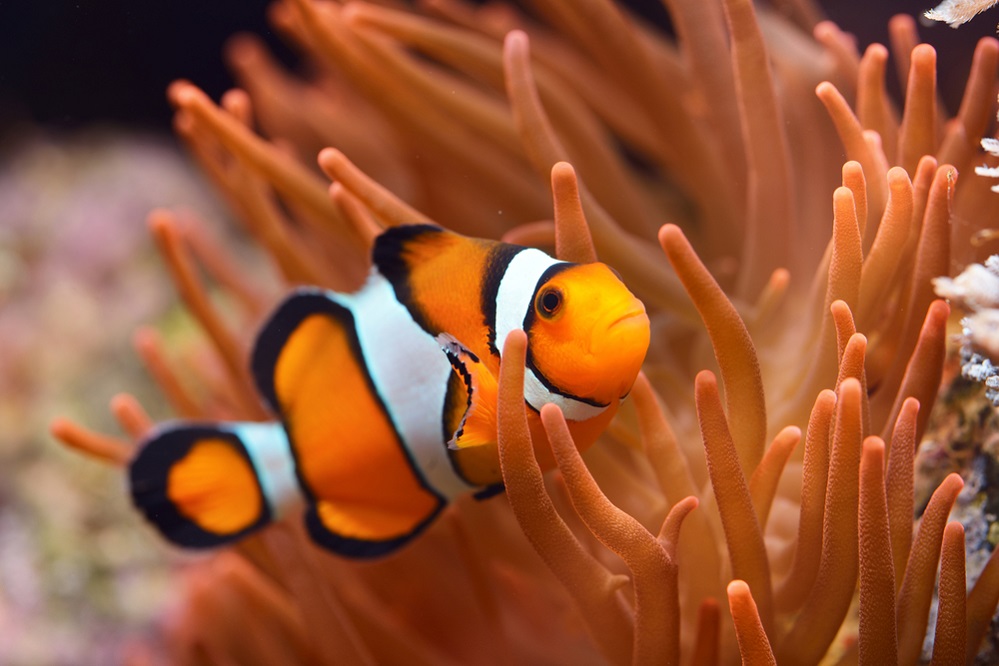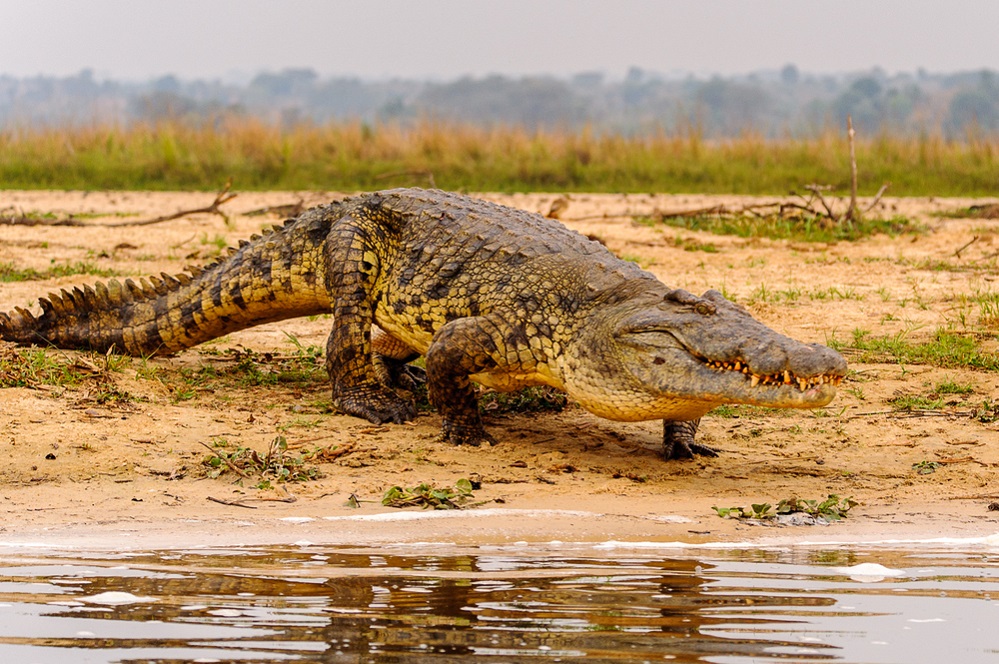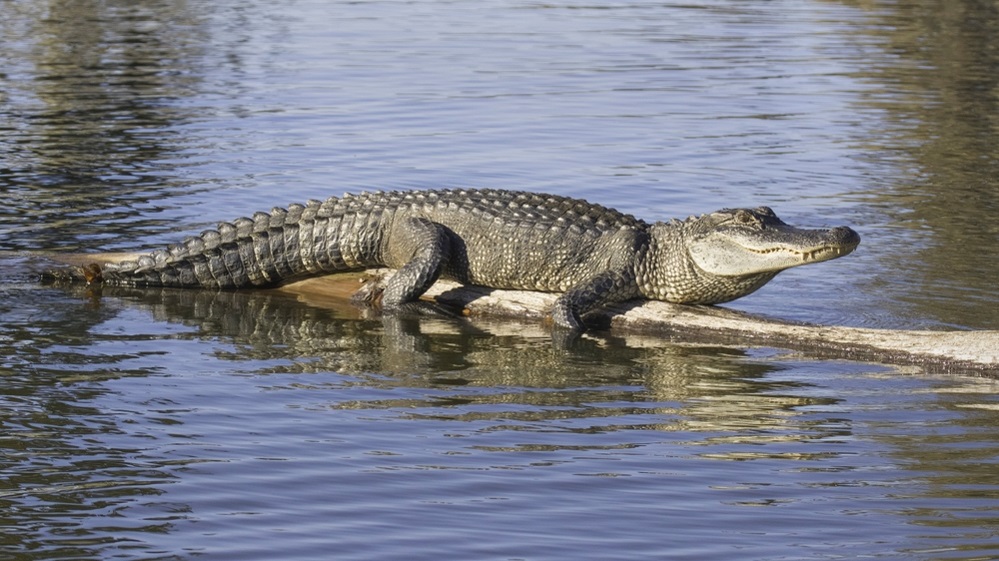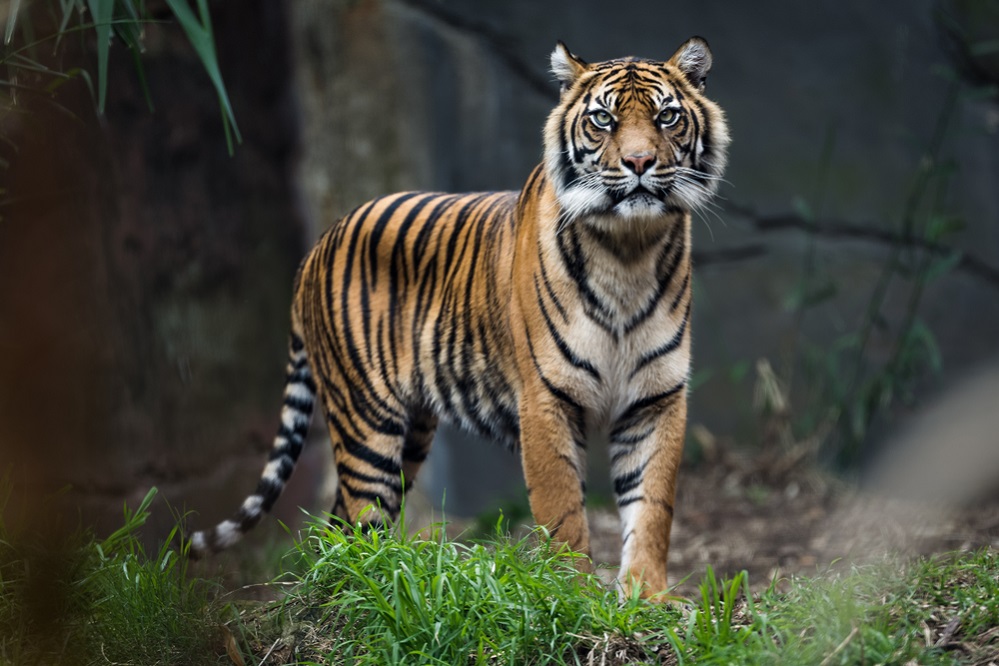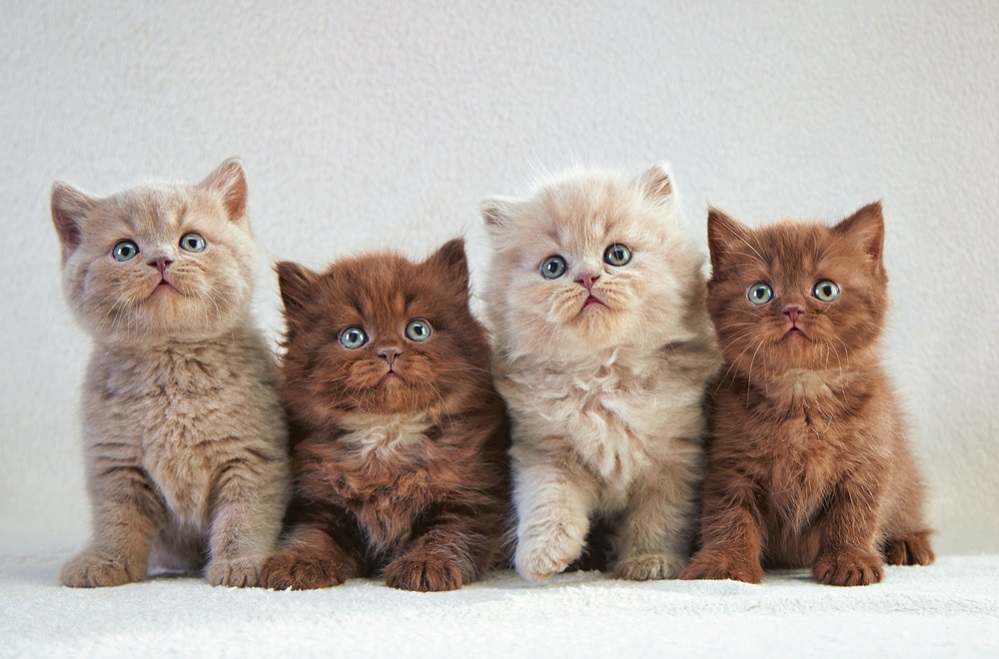The Ocellaris clownfish is also known as Nemo from the famous movie, Finding Nemo. It is a small and colorful fish that has gained popularity among aquarium owners. These small guys are bright orange with white stripes, and they got a particular lifestyle – they create their houses in the tentacles of sea anemones! Pretty cool, right?
In this guide, we’ll discuss everything about these fish, from their natural homes to how to set up a tank and maintain their health. By the time you finish, you will be prepared to make one of your very own Nemo’s a part of your family.
Taxonomy and Classification
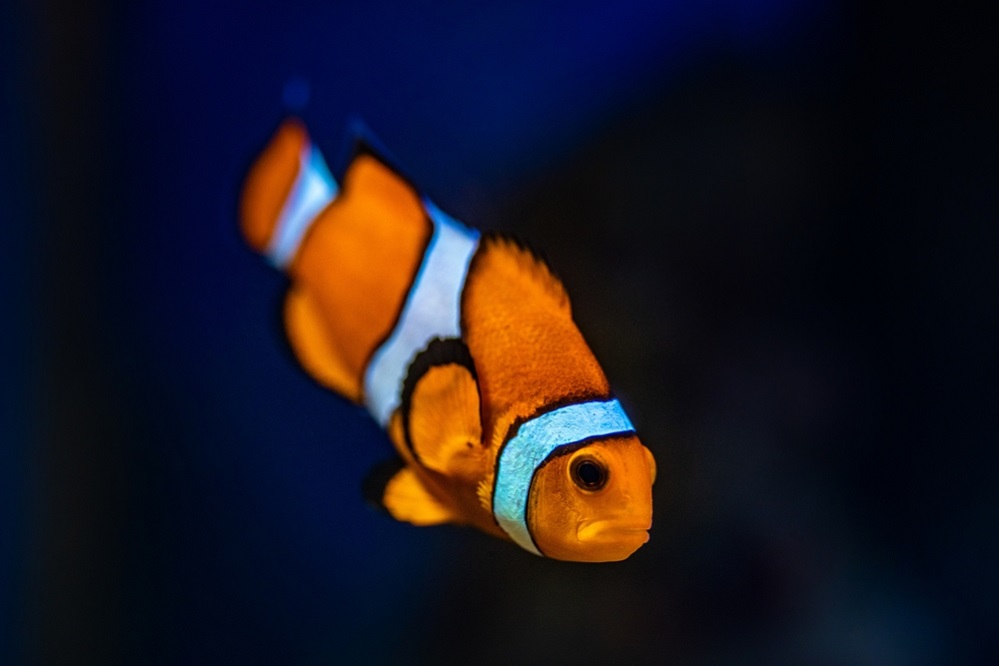
First of all, let us get the scientific details of the topic out of the way. The Ocellaris clownfish, scientifically named Amphiprion ocellaris, is a member of the Pomacentridae family, which includes many different damselfish and clownfish species.
These particular fish are endemic to the warm, coral-rich waters of the Indo-Pacific belt, stretching from the Red Sea to the east coast of Africa and from the western part of the Pacific Ocean.
However, do you ever wonder what makes them called ‘clown fishes’? It is because of their colorful, clown-like appearance and their special relationship with sea anemones that we are going to discuss later.
Kingdom
Animalia
Phylum
Chordata
Class
Actinopterygii
Order
Perciformes
Family
Pomacentridae
Genus
Amphiprion
Species
A. ocellaris
Natural Habitat and Distribution
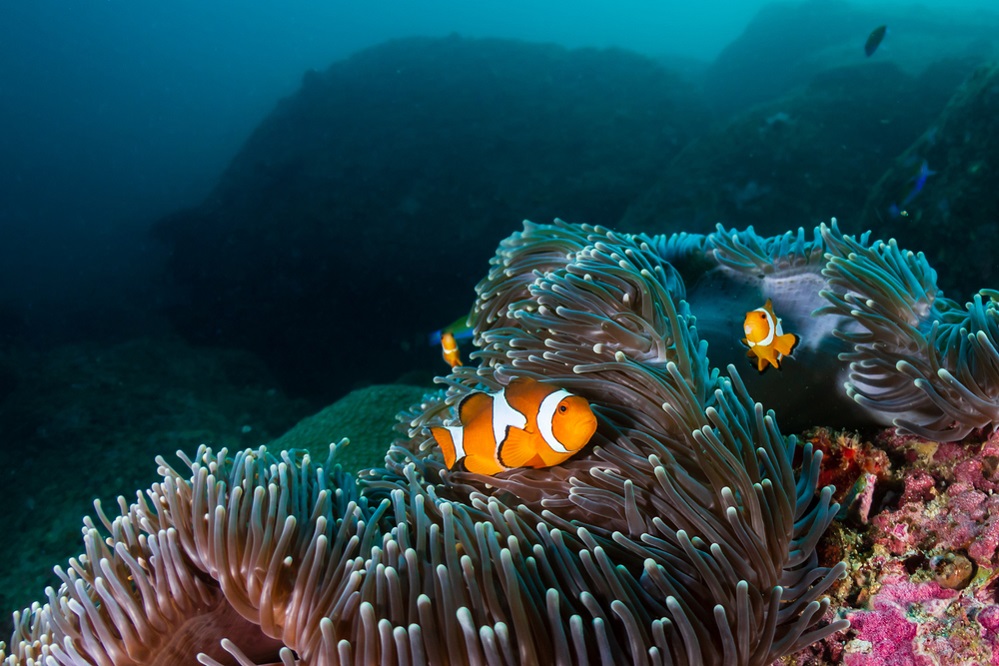
These lovely clownfish are very active and can be found in lush coral areas of the Indo-Pacific region where they inhabit their natural habitat. They mostly live in the warm, tropical waters of the Indian Ocean, the Red Sea, and the western Pacific Ocean, and their range goes from the east coast of Africa to the islands of French Polynesia.
These little fish usually prefer to live among various species of sea anemones, which are their refuge, defense, and food source. Interestingly, the Ocellaris clownfish has mastered an amazing adaptation to live in harmony with these venomous creatures through a type of mucus protective coating on their entire body.
Perhaps the most intriguing aspect of the natural habitat of Ocellaris clownfish is the variety of habitats they may inhabit. From the most colorful reefs of the Maldives to the loneliest atolls in the Marshall Islands, a great variety of fish that belong to this family have adapted to the different marine habitats.
Physical Characteristics and Appearance
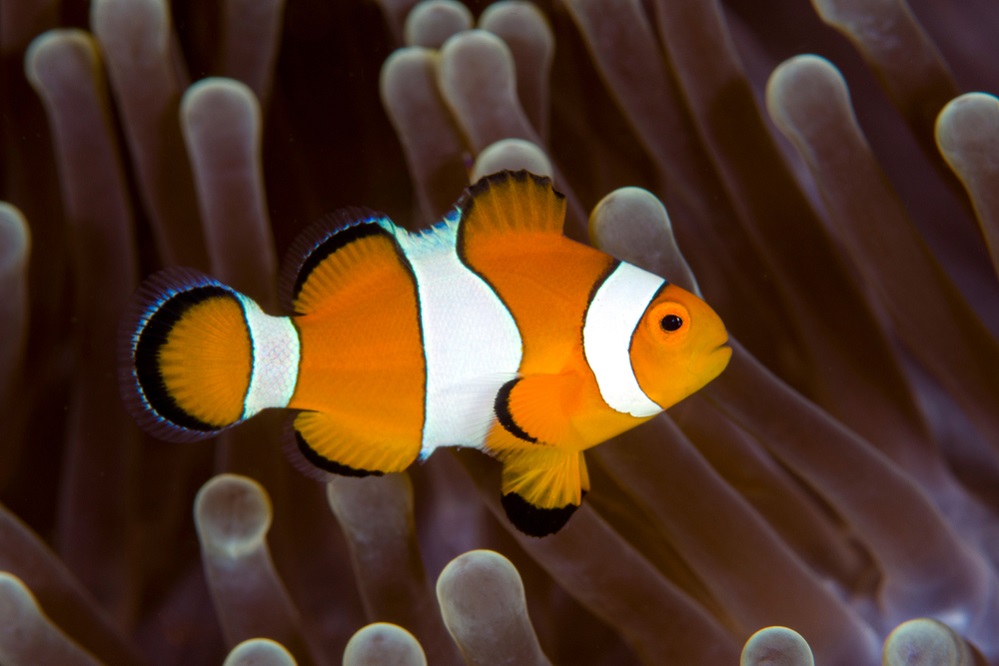
As for their visual appeal, “clownfish” perfectly suits their name. They are a bright orange with clearly white bands circling their bodies. The vibrant coloration of these animals warns predators of the danger of being stung by the venomous sea anemones with whom they associate.
Ocellaris clownfish are quite small, and they get to 3-4 inches in size when they are fully grown. Their bodies are flattened from side to side, which helps them swim within and around the coral structures that are their homes.
The characteristic feature of these animals is three white stripes – one near the head, one in the middle, and one near the tail. These bands help them to hide and warn other animals to stay away.
Although the most popular variant of Ocellaris clownfish is the orange and white color pattern, some have deeper almost Black ocellaris clownfish colors, and some that have more or less pronounced white stripes. These differentiations may be due to such factors as genetics, diet, or environment.
Behavior and Temperament
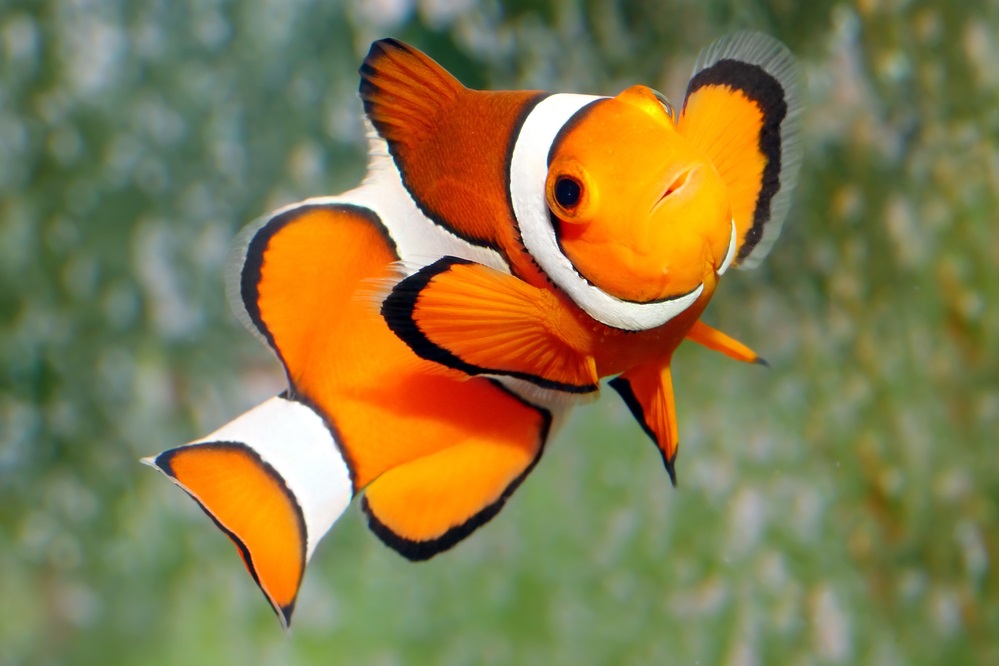
- Even if their size might be very small, trust me, these little ones aren’t just cute, they are also full of big personalities! They are full of curiosity and are amusing to see.
- One of their most exciting features is the special relationship they have with sea anemones. Ocellaris clownfish have a mucus coating, which protects them from being stung by venomous anemones. By providing the clownfish with a safe home in the anemone, they in turn help out by chasing away predators and parasites and even give back nutrients from their waste.
- Even though they are small in size, clownfish are very brave to defend their anemone homes. They won’t be shy to show their fins and drive away bigger fish that get too close.
- However, the Ocellaris clownfish are generally very calm towards their species. They commonly form tiny colonies or harems with one large male and several smaller female fish holding the same anemone.
- Even though clownfish are territorial to other species, they are social and get along well with other clownfish in a colony.
- Clownfish are very friendly toward humans, usually swimming boldly to the glass and exploring it with curiosity. On the other hand, they may go into attack mode if a hand is placed in the tank near their anemone.
Reproduction and Life Cycle
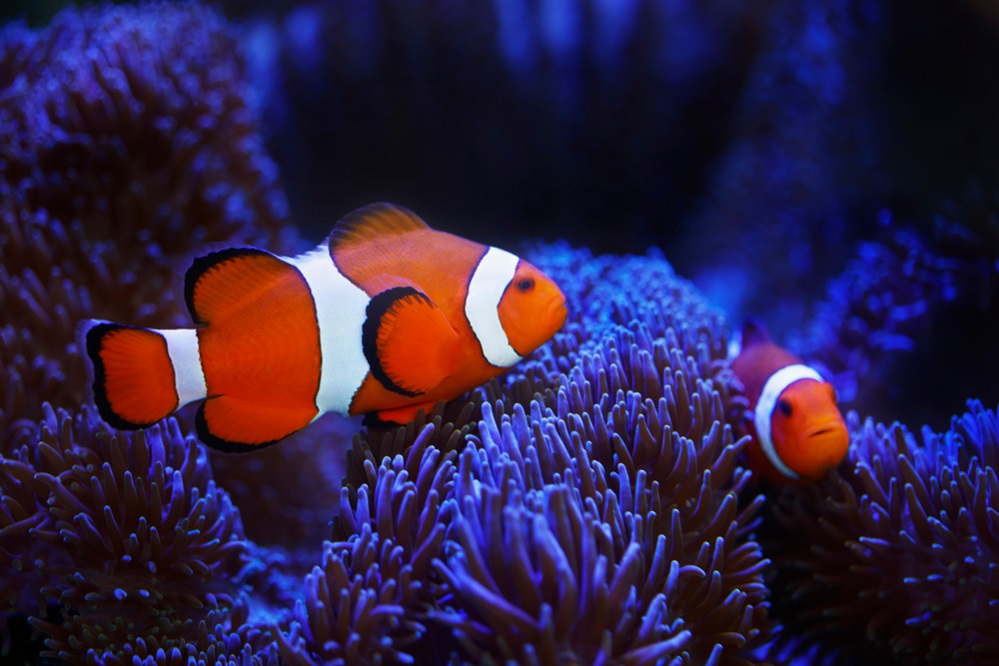
The reproductive cycle of Ocellaris clownfish is an interesting and intricate process, which exhibits a sequential hermaphroditism. In natural habitat conditions, these fish form small groups, and there is only one dominant male with many smaller females.
Here’s how it works: the biggest female in the colony will even switch her sex to male! This is what happens when there is no male leader in sight, and thus it is a way to guarantee that the colony can continue to reproduce.
After the new dominant male has established his rule, he will mate with those females that have stayed. The female will then lay her eggs on almost any flat surface near the anemone, which can be either a rock or a coral structure. The male is the one who is mainly responsible for defending and tending the eggs during this incubation period which lasts around 6 to 8 days.
After hatching, the entire larval stage of the clownfish takes place outside of the reef (open water) and stays there for a few weeks. Once the larvae find a pore to enter a reef and then land on a host anemone, it can now live inside the anemone for the rest of its life. Here, during this time when the larvae are in the middle of the sea, they are prone to get preyed on by their predators and they are also susceptible to other environmental factors causing the higher mortality rates observed early in their life cycle.
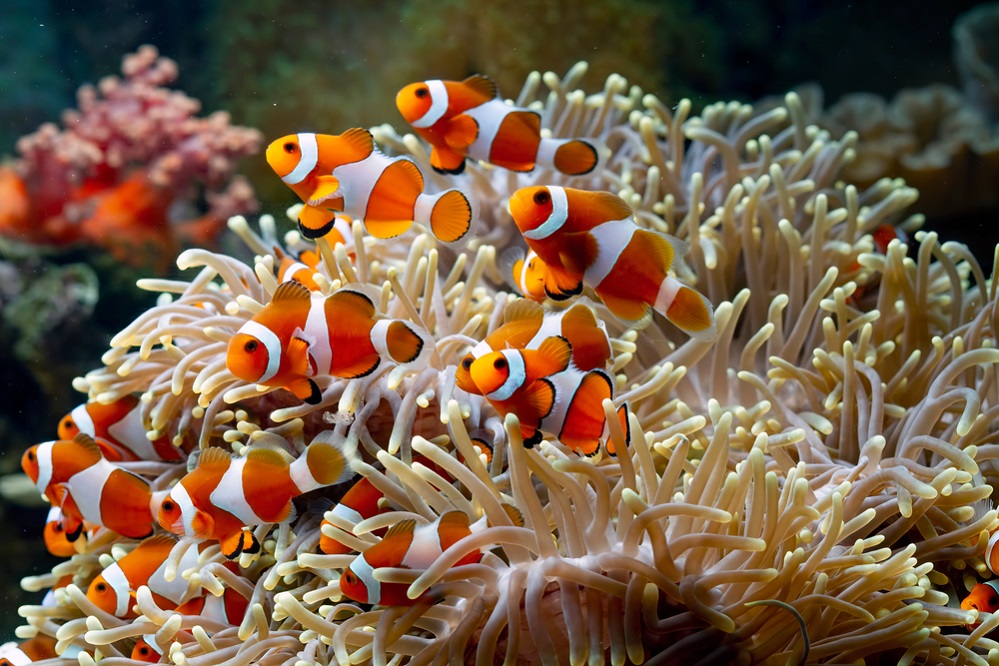
Clownfish that make it through and find an anemone host will transform a juvenile clownfish, acquiring the mannerisms and the color of an adult clownfish.
Lifespan and Longevity
Ocellaris clownfish stands out for its impressive lifespan, especially if it is exposed to the best Ocellaris clownfish care and good living conditions. In the wild, they can live up to 6 to 10 years with some of them exceeding their lovely age of 15 years.
However, keeping them in captivity can broaden their lifespans quite a lot as some Ocellaris clownfish in aquariums are known to have a lifespan that extends way beyond what they would normally have in the wild.
Giving them the right Ocellaris clownfish habitat, food, and care, these fish can stay up to 20 years or even longer in some very special cases.
Pricing and Affordability
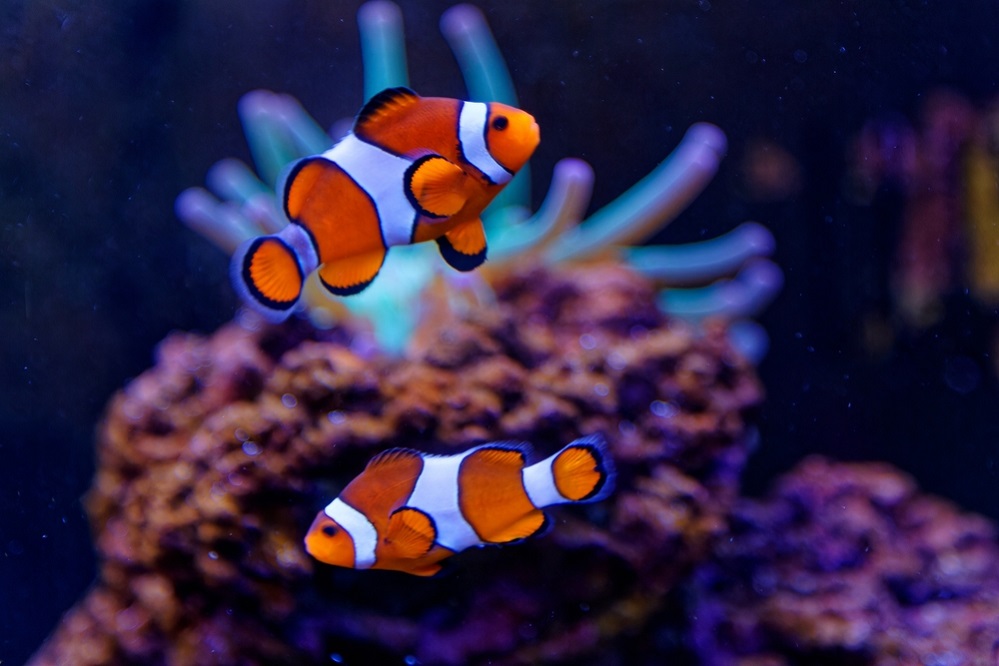
The Ocellaris clownfish is among the cheapest and most affordable species for home aquarium lovers, as the Ocellaris clownfish prices range from $10-$30 depending on the Ocellaris clownfish size and the source. Whether you’re just starting a saltwater aquarium or looking to add more clownfish to an existing system, this budget-friendly option won’t break the bank.
Aquarium Care and Requirements
Home aquarium maintenance of Ocellaris clownfish can be a rewarding and fun experience, but it’s necessary to be aware of their particular care requirements to guarantee their health and well-being. Here are some key considerations for maintaining these captivating creatures in a captive environment:
Tank Size and Setup
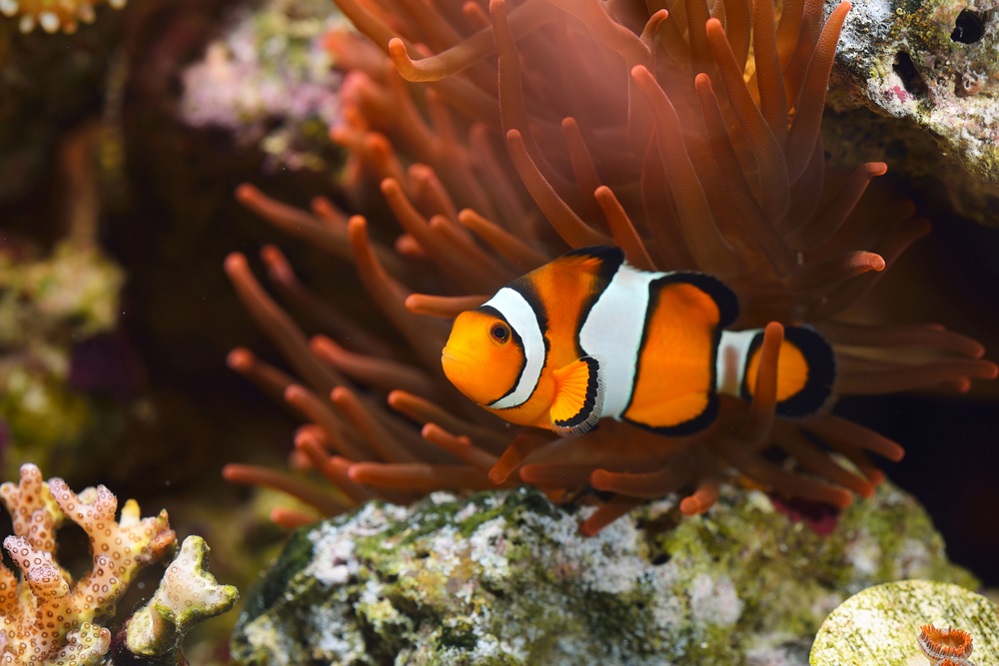
While Ocellaris clownfish are of small size, an aquarium with the correct size is still needed for the fish to thrive. For Ocellaris clownfish minimum tank size should be around 30 gallons to comfortably accommodate one fish and an additional 10 gallons of space should be added for each other fish.
When building the tank, it is essential to set up an environment that replicates their natural home as closely as possible. This is usually done by introducing live rock structures, which offer patches, where the fish can hide and also feed on the surfaces, as well as the compatible host anemone.
Compatibility with Sea Anemones
Ocellaris clownfish are among the most peculiar fish in terms of their symbiotic link with sea anemones. Though not strictly necessary, bringing in an anemone species that is symbiotic with the fish can significantly improve the quality of the tank by providing natural housing for the clownfish.
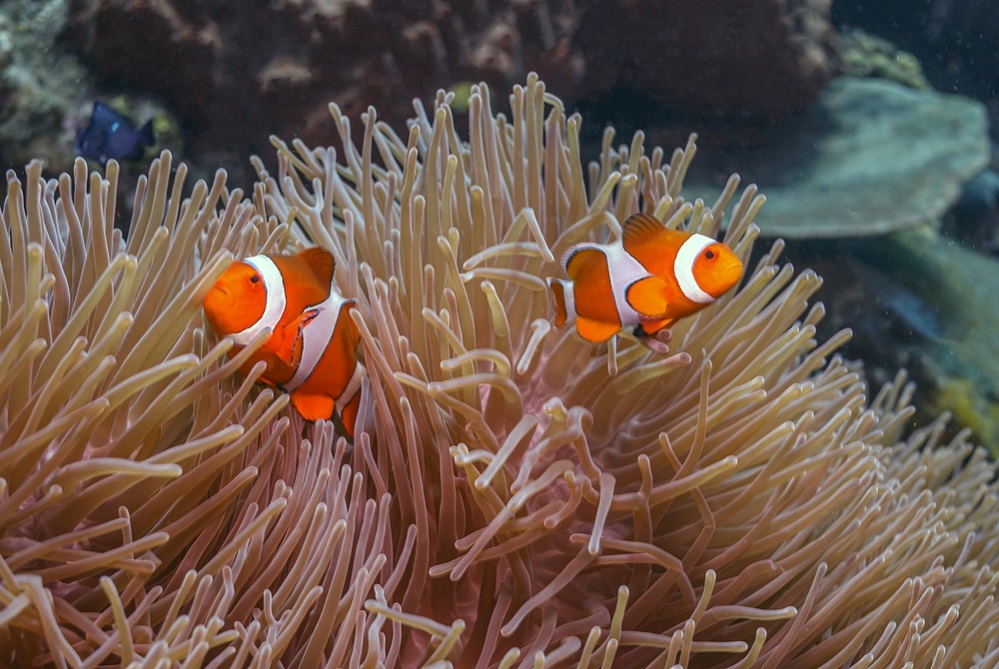
Some anemone species are suitable for Ocellaris clownfish to inhabit. Such as Bubble Tip Anemone (Entacmaea quadricolor), Sebae Anemone (Heteractis crispa), and Carpet Anemone (Stichodactyla gigantea). It is necessary to study the exact needs of each anemone species and make sure that the aquarium is suitable for the selected ones.
Water Parameters
The Ocellaris clownfish are quite hardy fish, but it is still vital to keep the water at optimal conditions for their long-term health and wellness. Here are the ideal water conditions for these fish:
- Temperature: 72°F to 82°F (22°C to 28°C)
- pH: 8.1- 8.4
- Salinity: 1.023 to 1.025 special gravity.
- Ammonia and Nitrite: 0 ppm
- Nitrate: Less than 20ppm
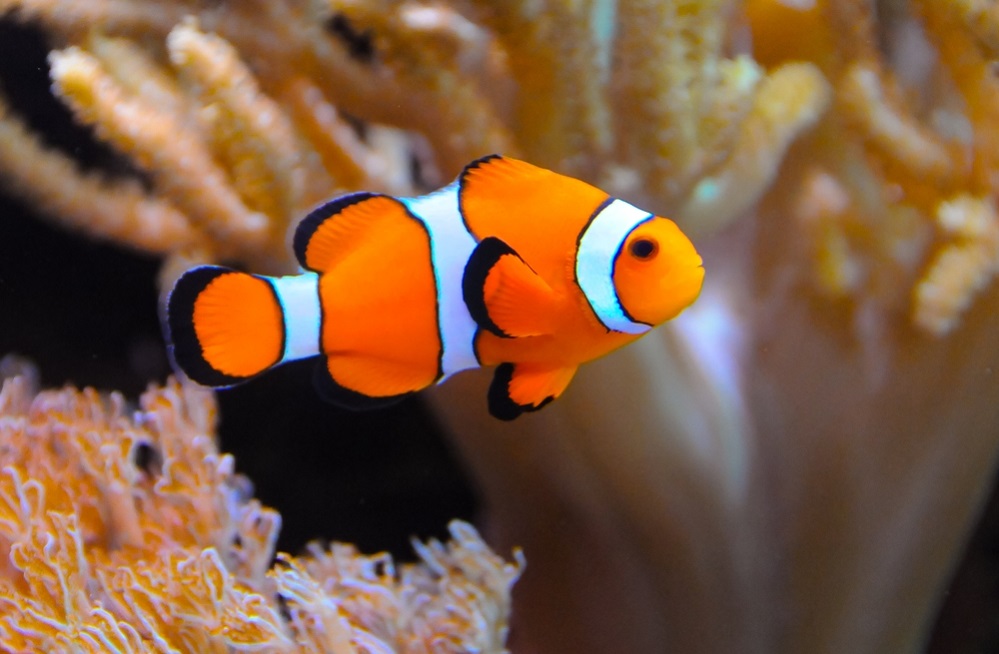
Continuous water testing and quick action to deal with any imbalances in these parameters are important for keeping a healthy aquarium ecosystem.
Feeding and Diet
In a natural habitat, ocellaris clownfish are omnivorous, they feed themselves with a wide variety of algae, plankton, and small invertebrates. While in captivity, they should be fed a balanced diet that consists of good quality marine flakes or pellets and frozen or live foods such as brine shrimp, mysis shrimp, and finely sliced marine greens.
They need to be fed not more than twice a day and only as much as they can finish eating within 2-3 minutes to prevent overfeeding and water pollution. Dietary diversity that is rich in protein amino acids, vitamins, and minerals is a prerequisite for their general health, wellness, and bright color.
Tank Mates
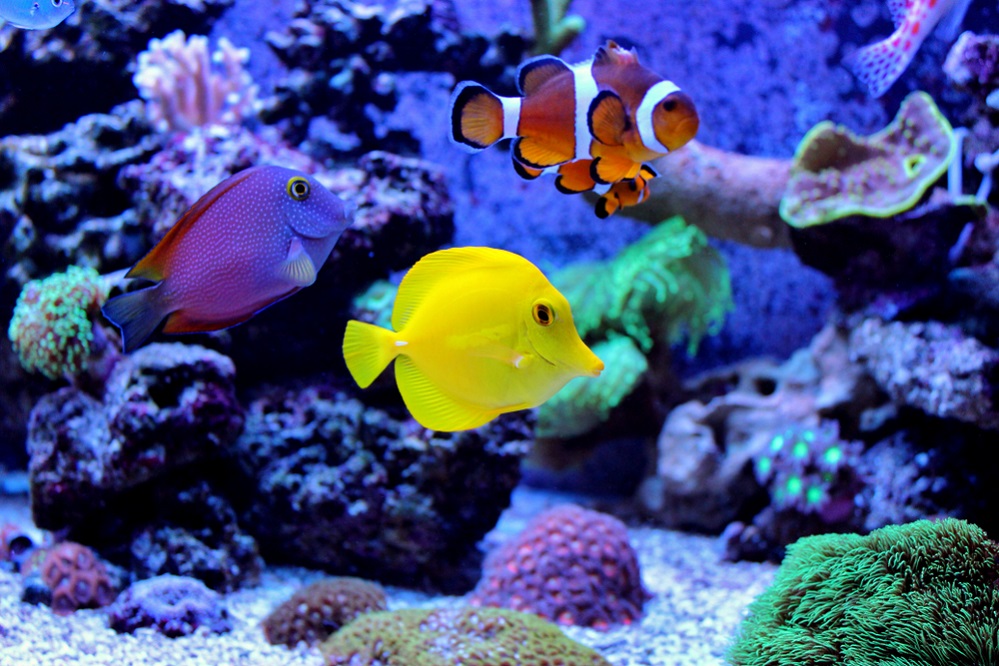
However, Ocellaris clownfish sometimes show aggressive behavior towards other fish of any species that come too near to their anemone host. But as a rule, they are peace-loving and can inhabit the same tank with many fish species that do not disturb their harmony in life. Some suitable tank mates for Ocellaris clownfish include:
- Some other clownfish species (with great caution to prevent fights)
- Dwarf angels
- Chromis
- Gobies
- Certain wrasses
- Shrimp and Hermit Crabs
Knowing which species work well with each other and how they would interact is important. Therefore, introduce them one by one to the established aquarium to avoid aggression and territorial fights.
Disease Prevention and Treatment
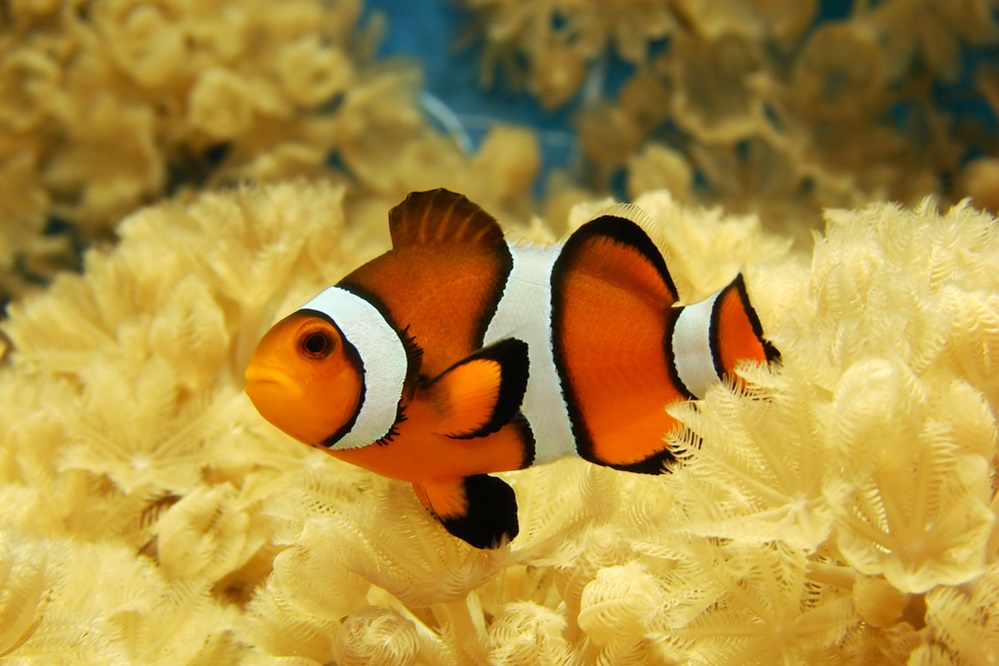
An ocellaris clownfish which is like any other captive fish can be vulnerable to a range of diseases and health problems if the condition of its living environment is unsatisfactory. Common issues in clownfish are marine ich (white spot disease), marine velvet disease, and bacterial infections.
Adequate disinfection, regular water analysis, and keeping the water quality are a must for eliminating water-related disease outbreaks. If a health issue arises, then immediate treatment with the right medications is necessary, and addressing the underlying cause (poor water quality or stress) is important for the fish’s recovery.
Reason Behind the Popularity of Ocellaris Clownfish (Finding Nemo)
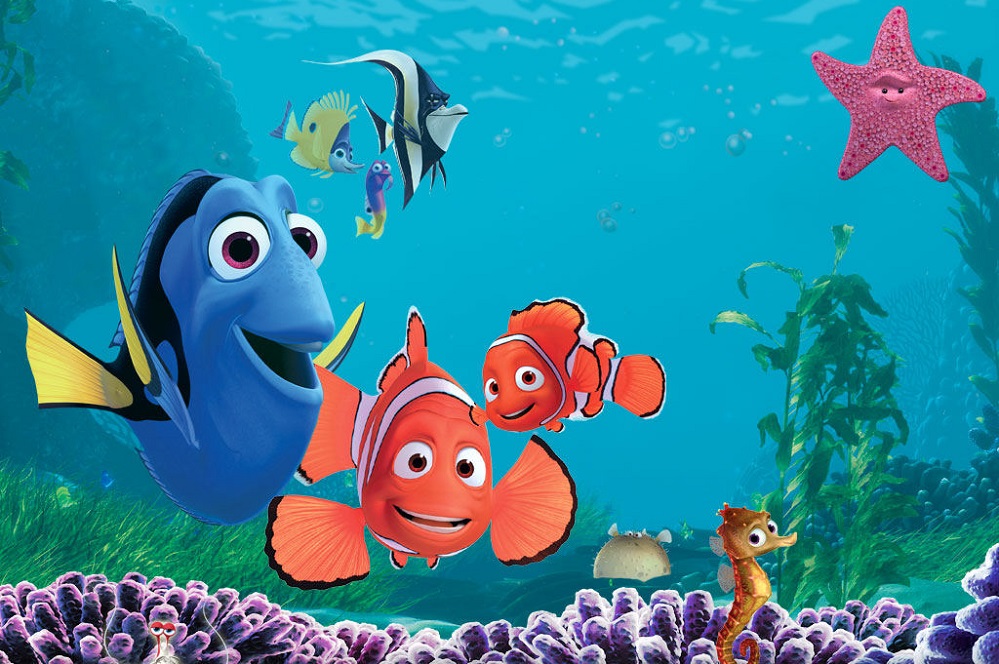
The Ocellaris clownfish turned out to be a real superstar all over the world thanks to the release of the blockbuster movie “Finding Nemo” produced by Pixar Studios. It’s impossible to count the number of people who fell in love with Nemo, the tiny clownfish with the orange color and white stripes.
This popularity caused the strongest increase in demand for Ocellaris clownfish as pets in households in aquariums all over the world. The aquarium stores couldn’t handle the hype of owning these colorful fishes.
Nevertheless, its mainstream acceptance posed some conservation challenges as well. Thus, the demand for Ocellaris clownfish from coral reefs in the oceans grew higher and higher, and concern about over-harvesting arose.
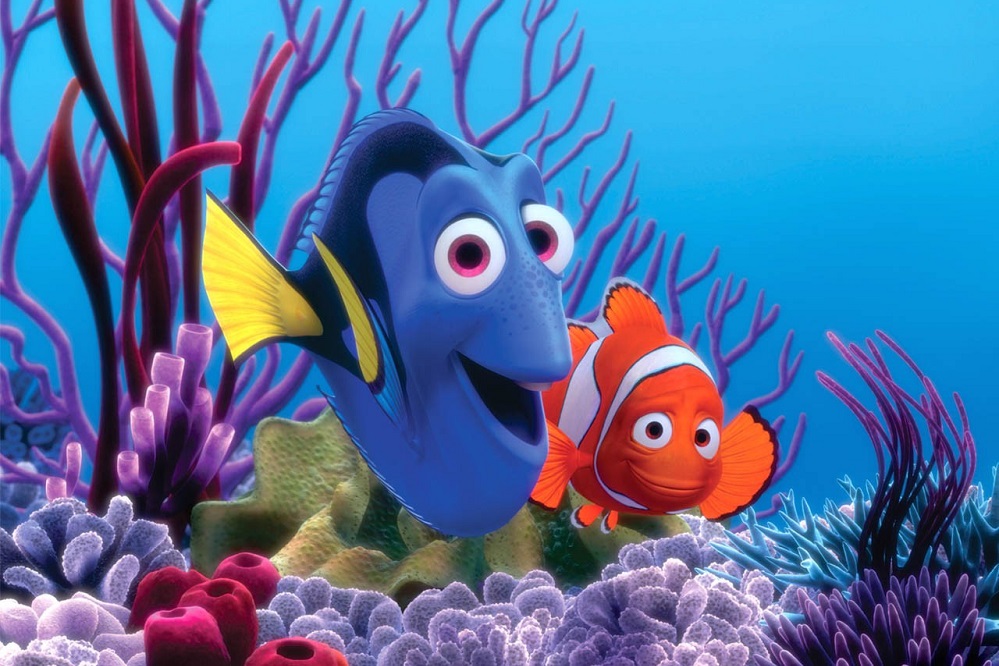
By removing too many clownfish, the ecosystems that these clownfish contribute to can collapse. Another big problem is the ongoing annihilation of coral reefs themselves because of pollution, over-fishing, and climate change – without healthy reefs the clownfish have nowhere to live and reproduce.
To guarantee the long-term existence of Ocellaris clownfish, a range of conservation programs are starting to be implemented. Some of these initiatives include captive breeding of aquarium fishes instead of harvesting from the wild, designating protected marine areas for the thriving of coral reefs, educating people on responsible aquarium practices, and strictly regulating the collection and trade of wild clownfish.
While Finding Nemo brought worldwide admiration for this species, it also highlighted how crucial it is to preserve them and their marine homes.
Conservation Efforts
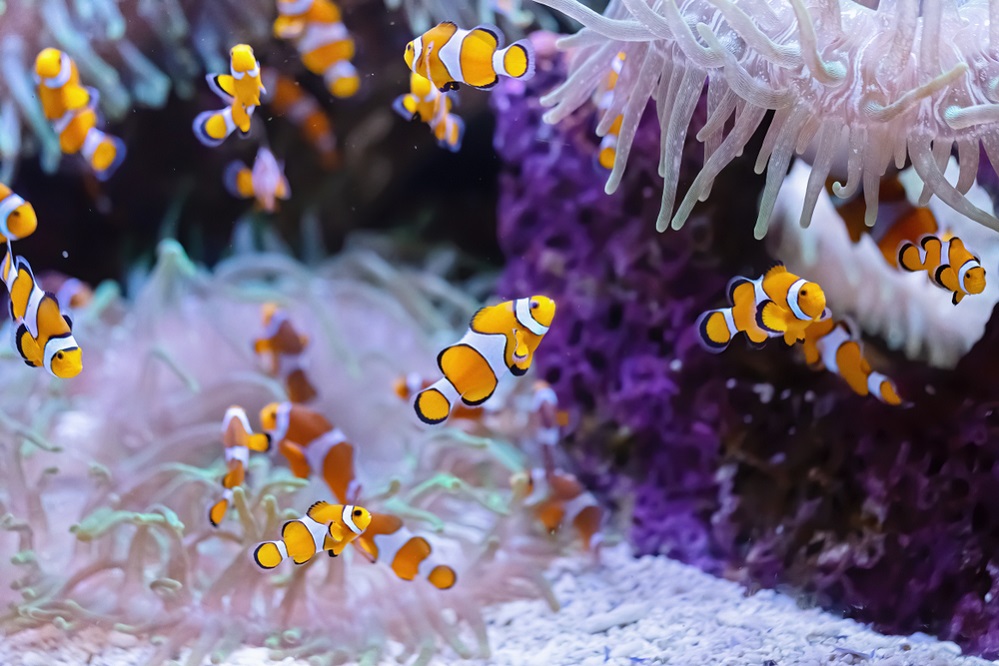
As the demand for Ocellaris clownfish in aquarium trade is increasing it became a matter of concern if this could harm the natural populations of it. Currently, the fish has not been characterized as endangered or threatened, but efforts towards conservation are being made to ensure their sustainability and protect the nature where these fish inhabit.
One significant action is the establishment of MPAs (Marine Protected Areas) in those regions where Ocellaris clownfish populate. These demarcated areas can either prohibit or limit certain activities such as fishing in favor of protecting the reef coral ecosystem that the fish inhabits.
Moreover, organizations such as Marine Aquarium Societies of North America (MASNA) and the Ocean Conservancy have taken steps to educate the public and implement best practices to encourage proper aquarium keeping and discourage the collection of wild specimens when the captive bred ones are available.
FAQs
Are Ocellaris clownfish aggressive?
The Ocellaris clownfish is one of the least aggressive species among all clownfishes. Even though they can scare off predators by flashing fins in front of their host anemone, they generally do not bite.
Is the care of a clownfish complicated for a beginner aquarium owner?
Clownfish are a good choice for beginners because they are comparatively more robust and do not demand too much attention and care like some marine species. It is crucial to have a proper tank size, water parameters, and diet.
What are the ethical ways to get a clownfish?
In order not to affect the wild populations, it is recommended to buy captive-bred clownfish from a reliable aquaculture provider instead of gathering it from the coral reefs.
How many times per day clownfish should be fed?
It will be better if you feed clownfish 2-3 small meals a day, providing only a quantity that can be consumed in a few minutes to not over-feed them.
What size of tank is suitable for the clownfish?
A minimum of 30-gallon tank would be probably fine for holding one clownfish. For every additional clownfish, add another 10 gallons of space.
How long do the clownfish live?
With good care Ocellaris clownfish lifespan can reach 6-10 years of age in nature. In the home aquarium, their life span can run up to 20 years or more and sometimes even longer.
Conclusion
In a nutshell, the Ocellaris clownfish is a tiny fish with a tremendous character. They have some distinctive features like they get friendly with anemones, and coloured bodies, and their comical behaviors have made them a hot favorite for keeping as pets.
Nevertheless, they brought both achievements and conservation efforts. When given the appropriate aquarium maintenance and protection of their natural environment, clownfish become delightful to adults as well as kids for a long time.

